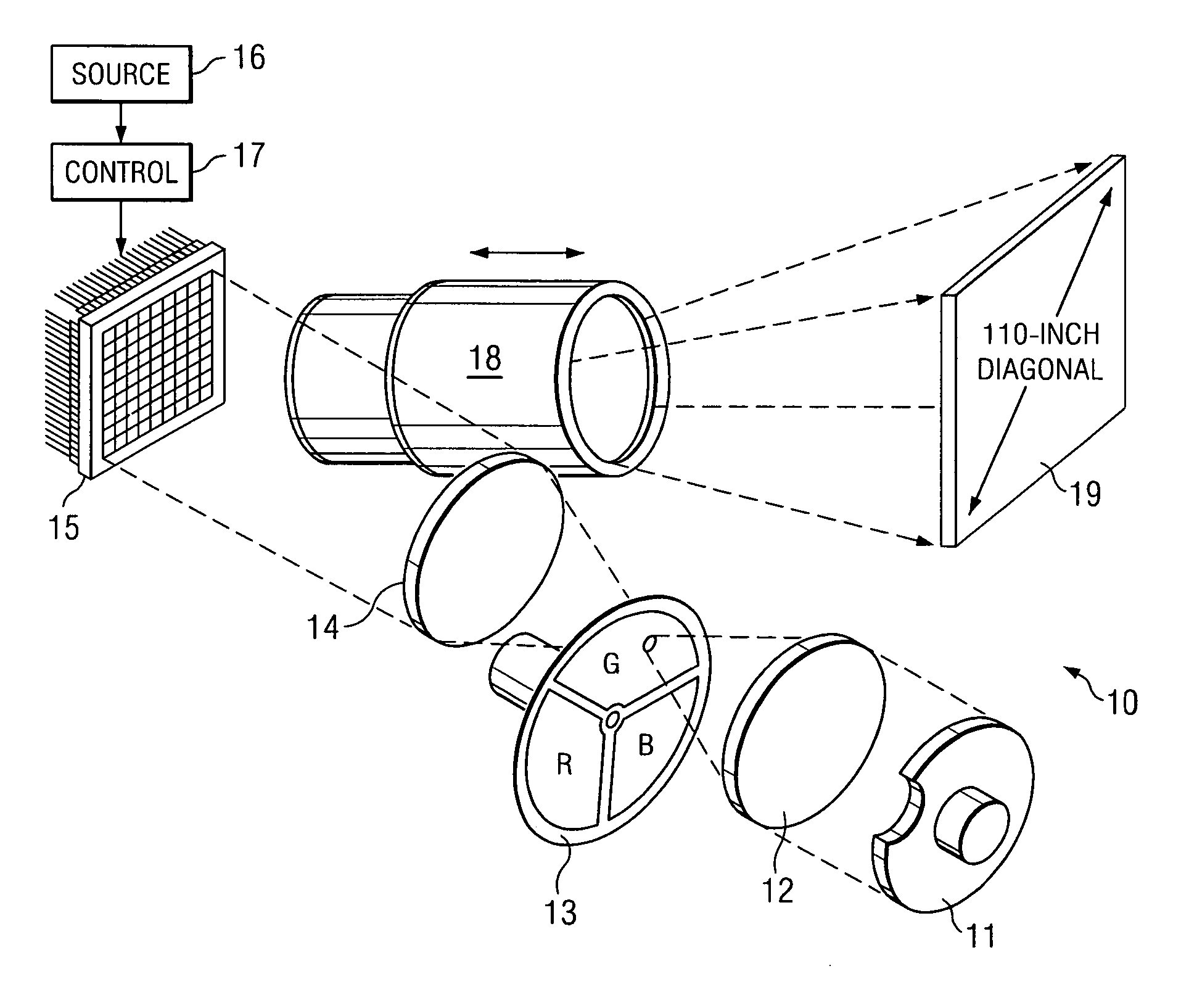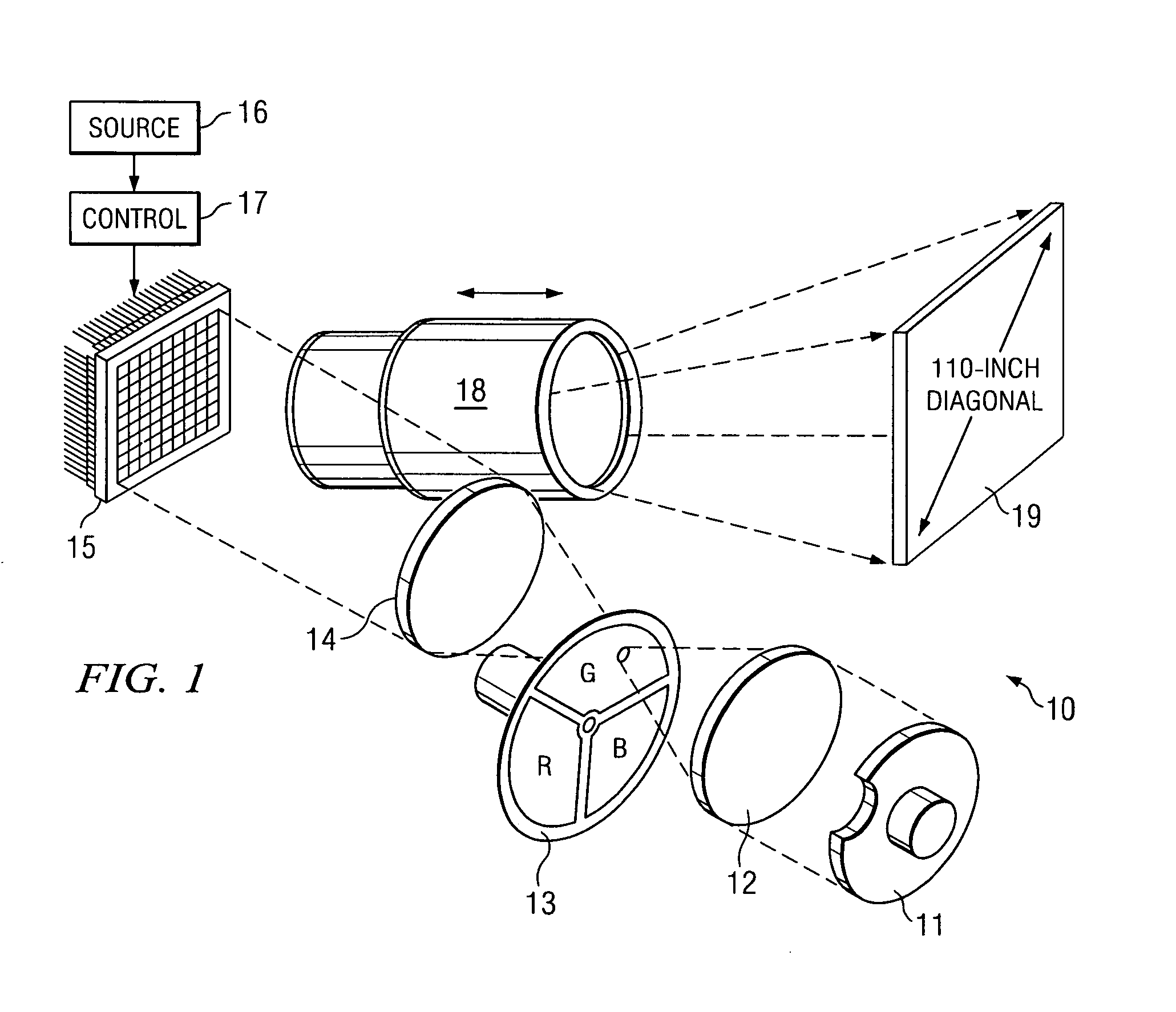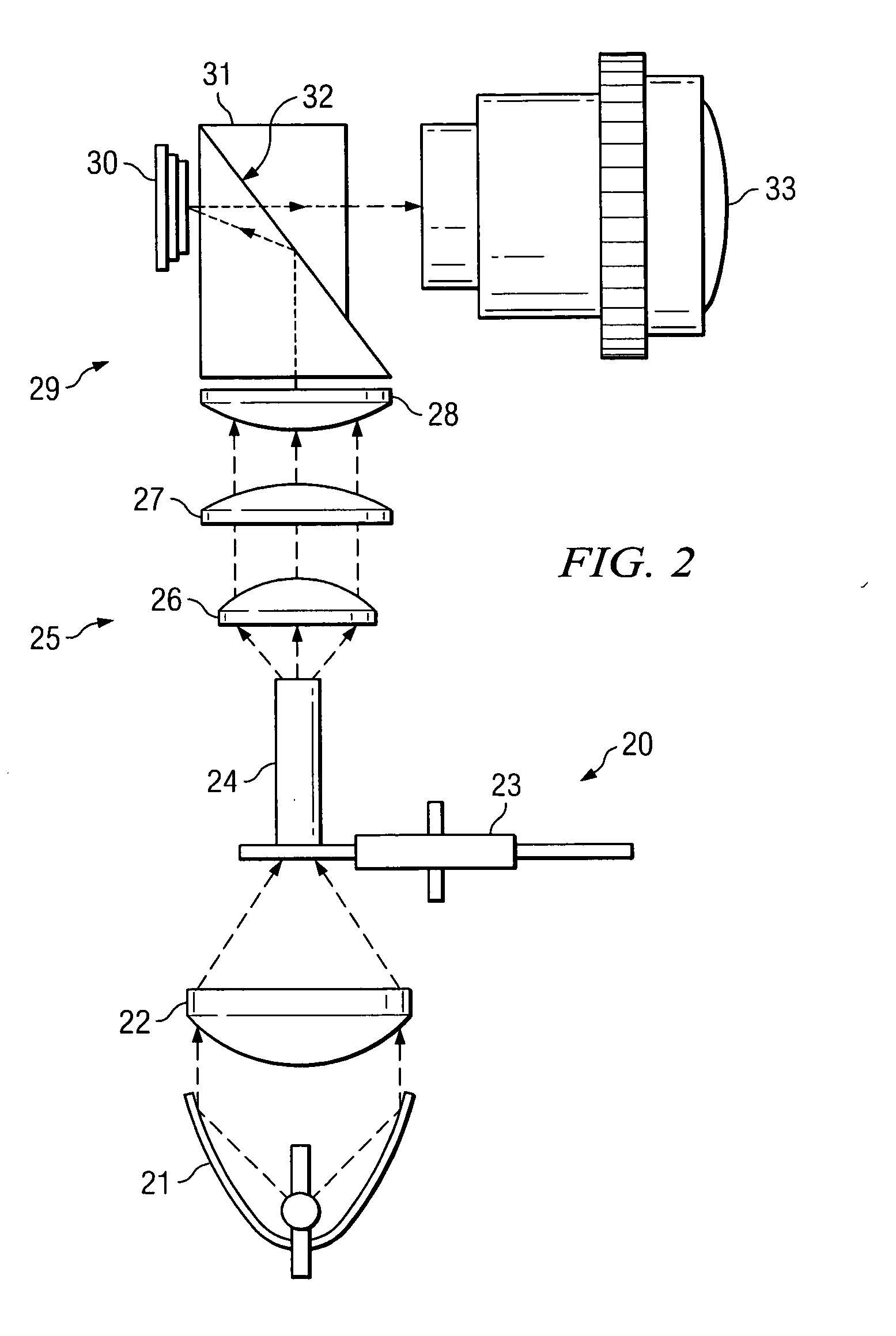Illumination system with integral modulation technique
a projection display and integrated modulation technology, applied in the field of projection display systems, can solve the problems of difficult to achieve perceptible increases in quality, affecting the quality of visual images, and occupying a relatively large space for crt, so as to improve the contrast of visual images and increase bit depth
- Summary
- Abstract
- Description
- Claims
- Application Information
AI Technical Summary
Benefits of technology
Problems solved by technology
Method used
Image
Examples
Embodiment Construction
[0025] The making and using of the presently preferred embodiments are discussed in detail below. It should be appreciated, however, that the present invention provides many applicable inventive concepts that can be embodied in a wide variety of specific contexts. The specific embodiments discussed are merely illustrative of specific ways to make and use the invention, and are not intended to limit its scope.
[0026] The present invention will be described with respect to preferred embodiments in a specific context, namely a projection display system that produces visual images on a display screen using spatial light modulation (SLM). The invention may also be applied to advantage, however, in other optical systems that modulate light to produce visual images for display.
[0027] Naturally, in any projection display system one goal is to produce a visual image of high quality on the visual image display screen. The techniques used to accomplish this goal, however, generally are limite...
PUM
 Login to View More
Login to View More Abstract
Description
Claims
Application Information
 Login to View More
Login to View More - R&D
- Intellectual Property
- Life Sciences
- Materials
- Tech Scout
- Unparalleled Data Quality
- Higher Quality Content
- 60% Fewer Hallucinations
Browse by: Latest US Patents, China's latest patents, Technical Efficacy Thesaurus, Application Domain, Technology Topic, Popular Technical Reports.
© 2025 PatSnap. All rights reserved.Legal|Privacy policy|Modern Slavery Act Transparency Statement|Sitemap|About US| Contact US: help@patsnap.com



